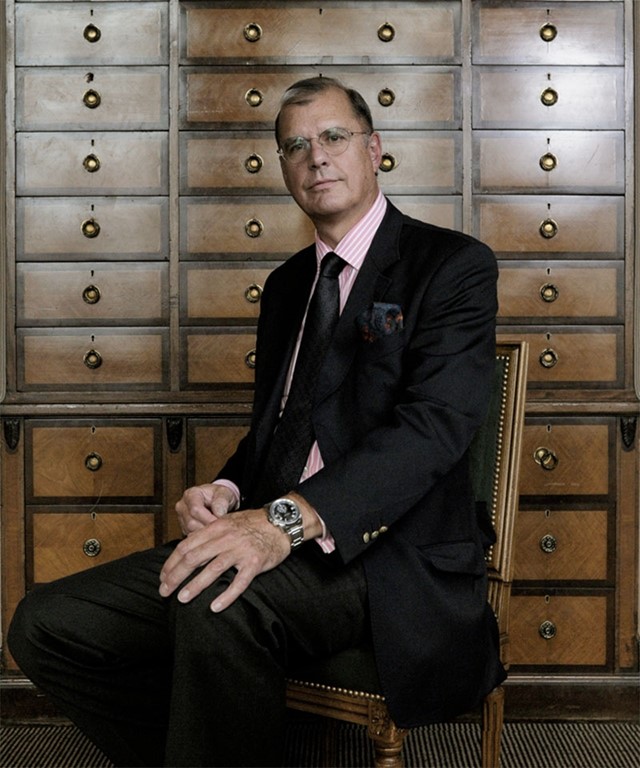Insiders meets Bernhard Berger, the head of Cartier Tradition – the division of Cartier that specialises in vintage pieces from before 1970
If jewels could speak, what stories would they tell? For the 167-year-old luxury jeweller and watch-maker Cartier who have made gems for everyone from the Duchess of Windsor, Princess Grace, Elizabeth Taylor, not to mention a few Maharajahs, the stories might speak of untold extravagance or pure romantic gestures but the favourite tale of Bernhard Berger, head of Cartier Tradition – the division of Cartier that specialises in vintage pieces from before 1970 – was when the King of Siam visited the Paris atelier of Cartier in 1908. As he recounts it, "The interpreter said that the King wished to see some bracelets, whereupon the sales assistant showed him one tray after another, glittering with precious stones. But the King simply shook his head. Finally the assistant went over to the safe and brought out a tray containing the rarest and costliest bracelets. The King gave his interpreter a sign, and the latter turned to the sales assistant, 'His Majesty has chosen this one.' 'Which one?' asked the assistant. 'The whole tray of course!'”
Cartier has always inspired such fanatical devotion. Founded in 1847, Cartier was at first primarily a distributor for pieces made by other jewellers but came into its own in 1899 when Louis Cartier grandson of Louis-François Cartier, the founder of the house, took over the company and promptly revolutionized it, designing the very first men’s wristwatch and embracing the clean, geometric lines of the Art Deco movement that went against the fussier Art Nouveau style that was popular at the time. Notes Berger, “Louis wanted something pure, straight and clean. He was definitely looking at art and maybe Cubist art. He really influenced the style of the times.”
"Whether he’s chancing upon a rare edition of the much-desired Cartier Mystery Clock or sourcing neoclassical pieces from the turn of the 20th century, every day is different for Berger"
Berger’s earliest memories of the brand came courtesy of his father and his Cartier lighter but he came to work for Cartier in 1996 from Sotheby’s where he worked as a jewellery expert when then-curator of the Cartier Collection, Eric Nussbaum was looking for someone to head up a vintage department, responding to the growing demand for antique Cartier pieces that require authentication and expertise. “We always bought and sold pieces of course,” says Berger “What was really new was that we started keeping pieces for ourselves.” Not only does Cartier Tradition offer an exceptional service for the rigorous identification, authentication, and valuation of selected pieces but a small team of expert craftsmen will also meticulously restore these priceless heirlooms back to their original state using 19th century records, archival collections of photographic negatives, glass plates and sketches and combining it with the latest technology. Berger continues, “The real fun about restoring things is using traditional craftsmanship and on the other hand you use high-tech tools and that I think is very funny, to combine the two. You can combine the two but it’s still a craft.” Cartier Tradition was borne out of the necessity for the house to stay at the top of their game: “We’ve got to be the best experts of Cartier and you can’t be a good expert if you don’t work daily with the subject.”
Berger works from auctions and word-of-mouth from an exclusive network of contacts who will alert him when important pieces become available. Whether he’s chancing upon a rare edition of the much-desired Cartier Mystery Clock or sourcing neoclassical pieces from the turn of the 20th century for the upcoming Cartier: Style and History exhibition at the Grand Palais in Paris, every day is different for Berger. “Well you learn about a variety of the extreme creativity and the richness of the creativity of the company. Even in all the time I’ve worked here, I’m still seeing things I haven’t seen before.”
